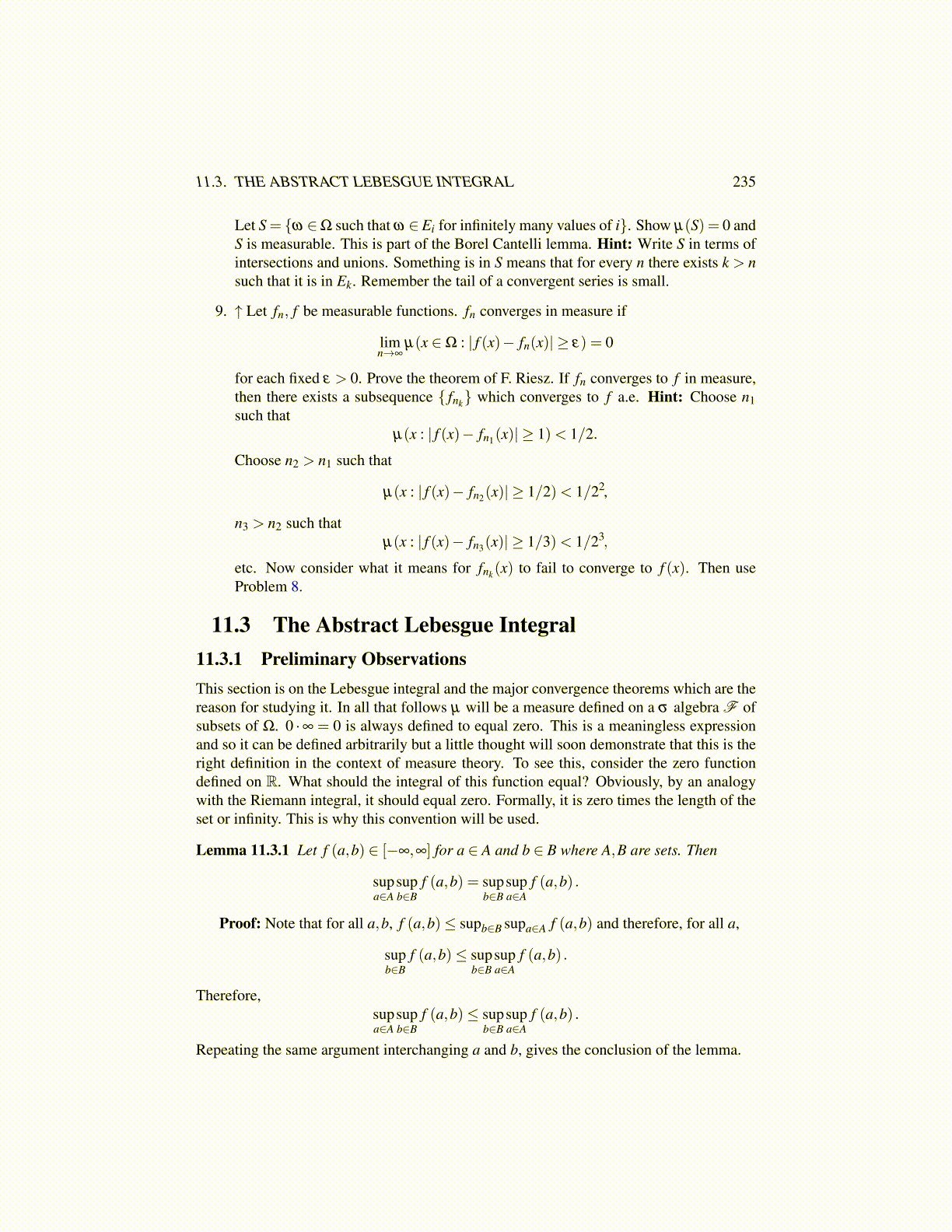
11.3. THE ABSTRACT LEBESGUE INTEGRAL 235
Let S = {ω ∈Ω such that ω ∈ Ei for infinitely many values of i}. Show µ(S) = 0 andS is measurable. This is part of the Borel Cantelli lemma. Hint: Write S in terms ofintersections and unions. Something is in S means that for every n there exists k > nsuch that it is in Ek. Remember the tail of a convergent series is small.
9. ↑ Let fn, f be measurable functions. fn converges in measure if
limn→∞
µ(x ∈Ω : | f (x)− fn(x)| ≥ ε) = 0
for each fixed ε > 0. Prove the theorem of F. Riesz. If fn converges to f in measure,then there exists a subsequence { fnk} which converges to f a.e. Hint: Choose n1such that
µ(x : | f (x)− fn1(x)| ≥ 1)< 1/2.
Choose n2 > n1 such that
µ(x : | f (x)− fn2(x)| ≥ 1/2)< 1/22,
n3 > n2 such thatµ(x : | f (x)− fn3(x)| ≥ 1/3)< 1/23,
etc. Now consider what it means for fnk(x) to fail to converge to f (x). Then useProblem 8.
11.3 The Abstract Lebesgue Integral11.3.1 Preliminary ObservationsThis section is on the Lebesgue integral and the major convergence theorems which are thereason for studying it. In all that follows µ will be a measure defined on a σ algebra F ofsubsets of Ω. 0 ·∞ = 0 is always defined to equal zero. This is a meaningless expressionand so it can be defined arbitrarily but a little thought will soon demonstrate that this is theright definition in the context of measure theory. To see this, consider the zero functiondefined on R. What should the integral of this function equal? Obviously, by an analogywith the Riemann integral, it should equal zero. Formally, it is zero times the length of theset or infinity. This is why this convention will be used.
Lemma 11.3.1 Let f (a,b) ∈ [−∞,∞] for a ∈ A and b ∈ B where A,B are sets. Then
supa∈A
supb∈B
f (a,b) = supb∈B
supa∈A
f (a,b) .
Proof: Note that for all a,b, f (a,b)≤ supb∈B supa∈A f (a,b) and therefore, for all a,
supb∈B
f (a,b)≤ supb∈B
supa∈A
f (a,b) .
Therefore,supa∈A
supb∈B
f (a,b)≤ supb∈B
supa∈A
f (a,b) .
Repeating the same argument interchanging a and b, gives the conclusion of the lemma.